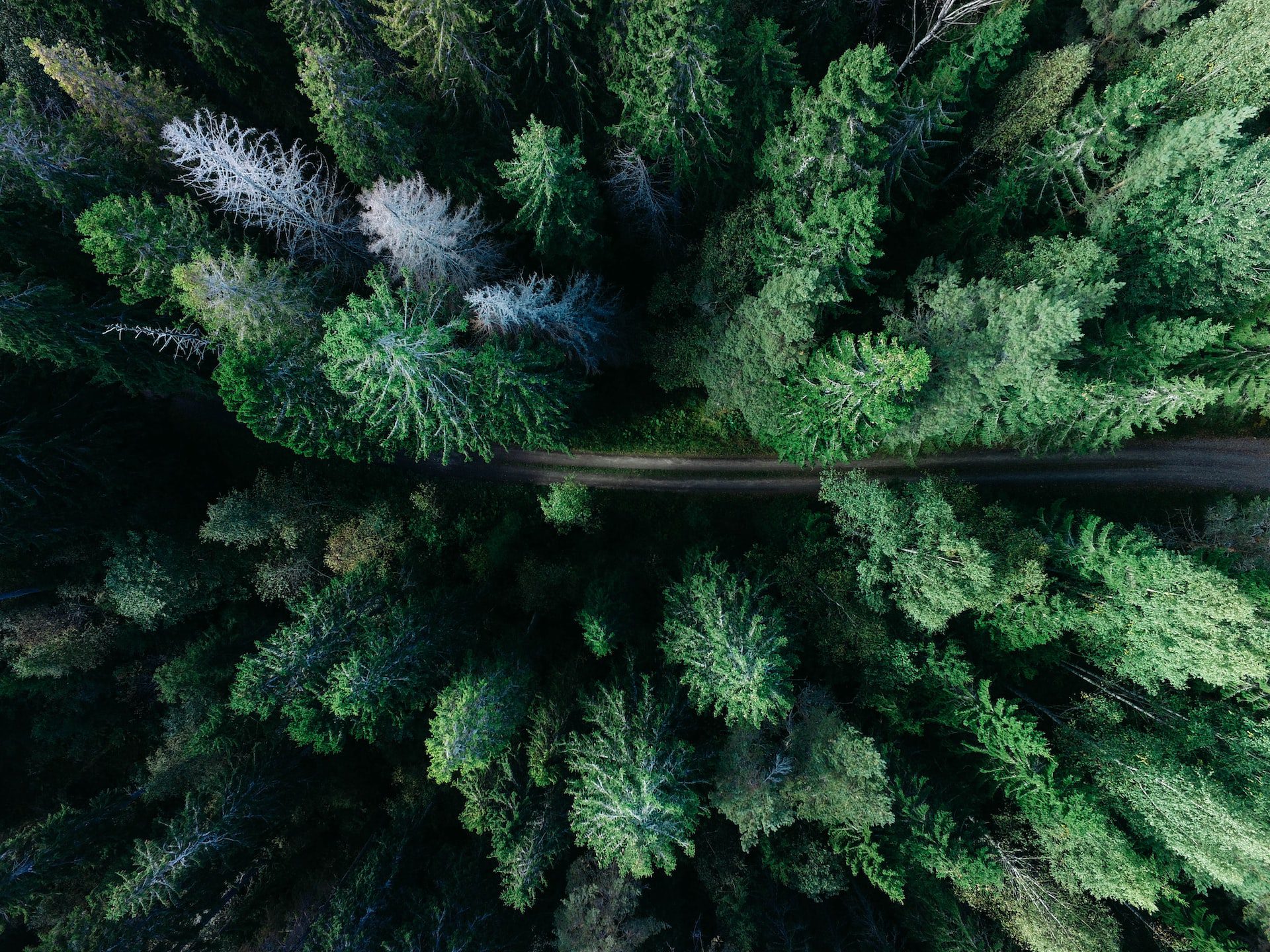
How to Write Engaging Non-Fiction: Nature Writing

Nature writing is a type of non-fiction writing in which the beauty of the natural world is observed and described, often as a way of exploring human emotion and experience. The landscapes and natural habitats that are examined in nature writing vary hugely, as does the human emotion or journey that is often probed. As such, nature writing is a broad, dynamic, and fertile genre, full of many different kinds of books.
The varying styles of nature writing
Nature writers might choose to examine what the natural world means to them personally, reflecting on their own relationship with, and memories of a particular place, like an unknown and hidden beach in the South West of England.
They might take a more focused and factual approach examining individual flora and fauna and their importance, like the importance of bees and the role they play in balancing our ecosystem.
Nature writers might also analyse the social and cultural history of a place, and provide a commentary on and chart the change and decline of a landscape or habitat from an environmental point of view.
For books that focus on a particular landscape, there are no limits as to what types of landscapes deserve attention. Nature writing can be about cliffs, lakes, rivers, deserts, gardens, meadows, oceans, remote islands, and underwater worlds. It can be a study of the slices of nature within cities and urban spaces, whether focusing on parks or plants that we find cropping up in pavements.
Nature writing can focus on developments in agriculture, new farming techniques, the rearing of animals and the sowing of crops. It doesn’t have to be focused around locations and landscapes — it can be about the fauna and flora of a whole region, or just one animal, or even a single tree. But the two things that tend to unify all kinds of nature writing, are that the writing conveys a very clear sense of place and that the natural world is explored in terms of our relationship with it.
What attracts readers to nature writing?
Readers are attracted to this genre for different reasons and take away different learnings or feelings, dictated by the particular focus of the book. For example, nature writing that focuses on how the author found a particular landscape healing in a difficult and dark time will offer readers guidance, reassurance, and solace in a time when they might need it most. A reader might feel comforted and seen by this kind of book.
Magical, nostalgic, and literary reflections on a particular place will help readers escape their reality and be transported to a far-flung location and wild places like a foreboding forest, a sweeping beach, a flowing stream, or an idyllic riverbank.
For nature writing that has a scientific or educational element, where an author is making the reader rethink the importance of a particular plant, ecosystem, or habitat, or where they are addressing the effects of the climate crisis on the environment, readers will be hoping to come away with new facts and insights about a particular topic that might serve their activism.

Focusing your work
It’s important when you’re embarking on a nature writing project to think carefully about exactly what kind of writing you’re aiming to create and what the reader who is drawn to this kind of book is seeking to learn from or feel when reading it. Does what you’ve written satisfy why the reader was attracted to the book?
The other important element to consider is what kind of writing best suits your subject focus. Given it is a genre that overlaps with other genres like memoir, science, and activism, the style of writing employed in nature writing is varied. It can take many different forms — poetry about the natural world, cultural history told through essays, literary prose about the personal relationship with the natural world, and factual guidebooks.
Make sure that the form of writing you choose fits with the content and aim of your book.
Tips for nature writing
If you’re developing a book proposal on nature writing, there are a few things that you should keep in mind as you write:
- Your writing should convey a very clear sense of place.
- The natural world should be explored in terms of our relationship with it.
- You can write about any natural subject, from a single tree to a whole classification of flora or fauna, from a particular landscape to a whole country.
- Nature writing can take many forms, from poetry and essays to memoirs and factual guides.
- Think about the reading experience — consider why the reader might be attracted to your book and make sure your writing offers them what they are looking for, whether that’s reassurance, support, escapism, a new perspective or facts and figures.
As a genre, nature writing is experiencing a resurgence, thanks in part to society’s fatigue with the digital world and to the comfort many have found in retreating to nature and quieter places. The great outdoors is an appealing balm that can heal us and help us relax, acting as a tonic to a stressful day. While we can’t always access beautiful landscapes, we can access the natural world through writing.
Reading list
This list of popular nature books demonstrates the real breadth of the genre, from memoir to activism, and cultural history to more scientific approaches.
Entangled Life: How Fungi Makes Our World, Changes Our Minds and Shape Our Futures by Merlin Sheldrake
From redefining the boundaries of intelligent life forms to providing us with the building blocks of foodstuffs and medicines, Entangled Life demonstrates just how integral fungi are to sustained living on this planet.
Entangled Life is a mind-altering and surprising journey into a spectacular and neglected world. It shows that fungi provide a key to understanding both the planet on which we live, and life itself. This book is a remarkable work of modern science that truly changes the way we see the world. Every sentence offers up earth-shaking facts communicated in an excited tone.
Sheldrake shines a light on a totally unexplored topic with such accuracy and descriptive flair.
The Old Ways: A Journey On Foot by Robert MacFarlane
Robert MacFarlane is one of the most prolific and respected nature writers today. In The Old Ways, MacFarlane travels Britain’s ancient paths and discovers the secrets of Britain’s beautiful, underappreciated landscapes.
Following the tracks, holloways, drove-roads, and sea paths that form part of a vast ancient network of routes crisscrossing the British Isles and beyond, Macfarlane discovers a lost world – a landscape of the feet and the mind, of pilgrimage and ritual, of stories and ghosts; above all of the places and journeys which inspire and inhabit our imaginations.
MacFarlane is a master at totally immersing the reader in a particular place. To read this book is to be transported to different parts of the British Isles. One of the things that so many people love about this book is the impact it has had on the walks they previously thought uninteresting – MacFarlane forces the reader to rethink the landscapes they’ve become accustomed to and see the beauty in places they were previously blind to. Reading this book feels like an adventure and flight of discovery.
Braiding Sweetgrass: Indigenous Wisdom, Scientific Knowledge and the Teachings of Plants by Robin Wall Kimmerer
As a botanist and a member of the Citizen Potawatomi Nation, Robin Wall Kimmerer brings together scientific understanding with history and tradition in a collection of moving essays on how plants give us gifts and lessons.
The central argument running through the essays in Braiding Sweetgrass is that the awakening of a wider ecological consciousness requires us to embrace a reciprocal relationship with the rest of the living world. From asters and goldenrod, strawberries and squash, salamanders, algae, and sweetgrass, Wall Kimmerer argues that only when we can hear the languages of these other living beings will we be capable of understanding the generosity of the earth, and learn to give our own gifts in return.
The book is a powerful vision of a new world of balance, reciprocity, and gratitude. Wall Kimmerer is an incredible storyteller who writes with real compassion and very poetic prose, which is what makes this collection of essays so special and unique.
The Shepherd’s Life: A Tale of the Lake District by James Rebanks
Rebanks’ rural memoir is a rounded account of shepherding in the twenty-first century and a frank and engrossing dissection of a vanishing way of life.
In evocative and lucid prose, James Rebanks takes us through the year in the life of a shepherd, offering a unique and candid account of a truly rural life and fundamental connection with the land that most of us have lost. Part cultural history of the Lake District and part personal memoir, Rebanks’ passion for his subject lights up every sentence.
At once lyrical and political, gentle and angry, The Shepherd’s Life is an amazing example of nature writing at its finest – a book that successfully draws on the author’s deeply personal relationship with the land, transports the reader into the landscape and rural life of the author, and offers poignant historical and political commentary on the natural world all at the same time.
H is for Hawk by Helen Macdonald
H is for Hawk is a profound meditation on grief expressed through the author’s experience training a goshawk.
As a child, Helen Macdonald was determined to become a falconer, learning the arcane terminology and reading all the classic books. Years later, when her father died and she was struck deeply by grief, she became obsessed with the idea of training her own goshawk. The book is a moving and candid account of Macdonald’s struggle with grief as she tried to tame the hawk.
Macdonald writes beautifully on memory, nature, and nation, and how it might be possible to reconcile death with life and love. Her descriptive writing about nature is startlingly precise and her reflections on how taming an animal led to the untaming of herself are poignant. H is for Hawk is a fantastic example of distinguished writing about the relationship between humankind and the environment that evokes truly deep feelings in the reader.
The Salt Path by Raynor Winn
Just days after Raynor learns that Moth, her husband of 32 years, is terminally ill, their home is taken away and they lose their livelihood. With nothing left and little time, they make the brave and impulsive decision to walk the 630 miles of the sea-swept South West Coast Path, from Somerset to Dorset, via Devon and Cornwall.
The Salt Path is an honest and life-affirming story of coming to terms with grief and the healing power of the natural world. It is a portrayal of home, and how it can be lost, rebuilt, and rediscovered in the most unexpected ways. And it makes the reader appreciate the comforts of a warm home and good health. Written with real tenderness and humanity, it is about two people finding themselves in nature.
If you’re interested in writing non-fiction and want to get your work in front of a publisher, visit our free non-fiction book proposal course written by Lydia Yadi, Senior Commission Editor for Non-Fiction at Penguin Random House.
Note: All purchase links in this post are affiliate links through BookShop.org, and Novlr may earn a small commission – every purchase supports independent bookstores.



































